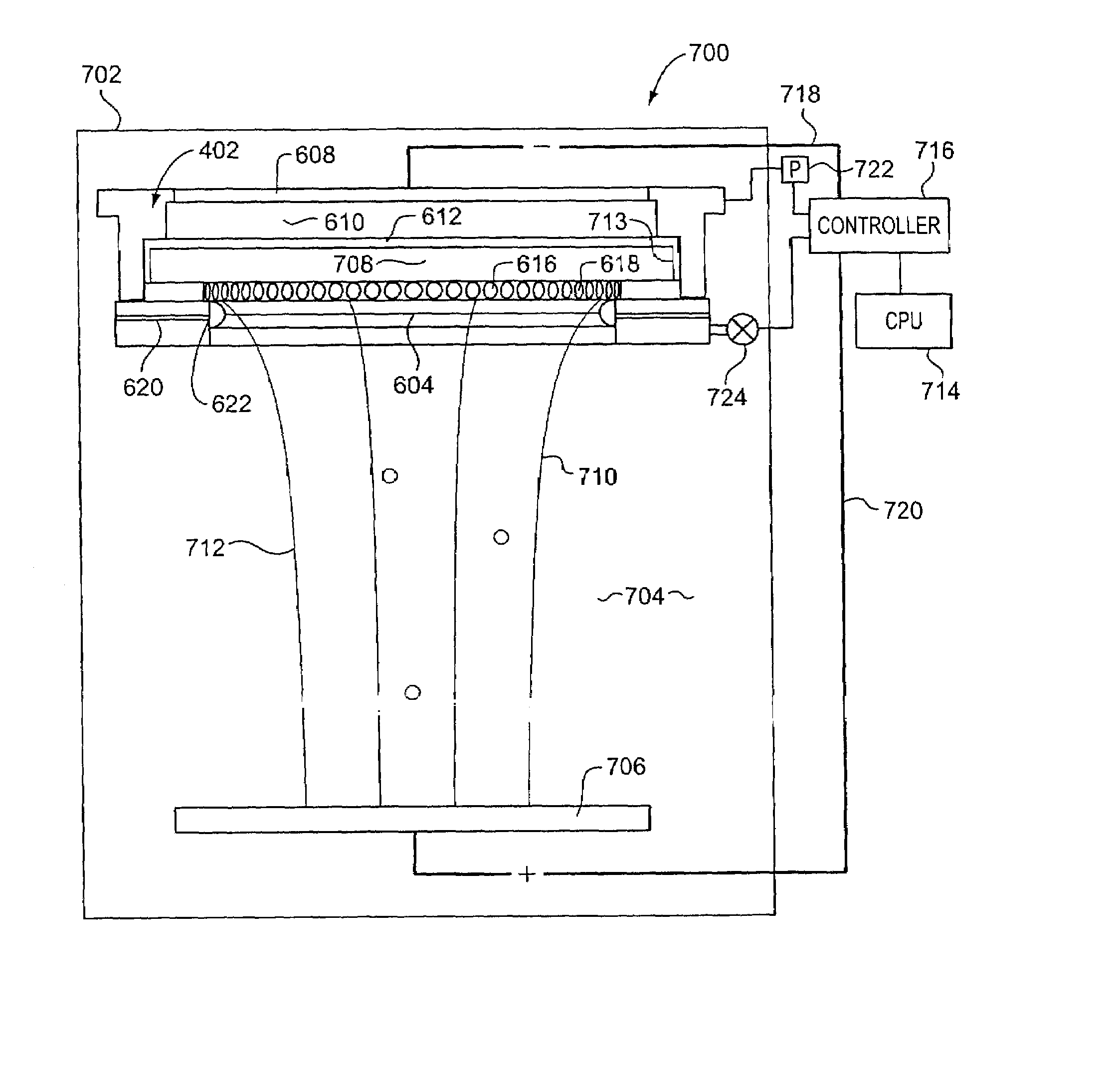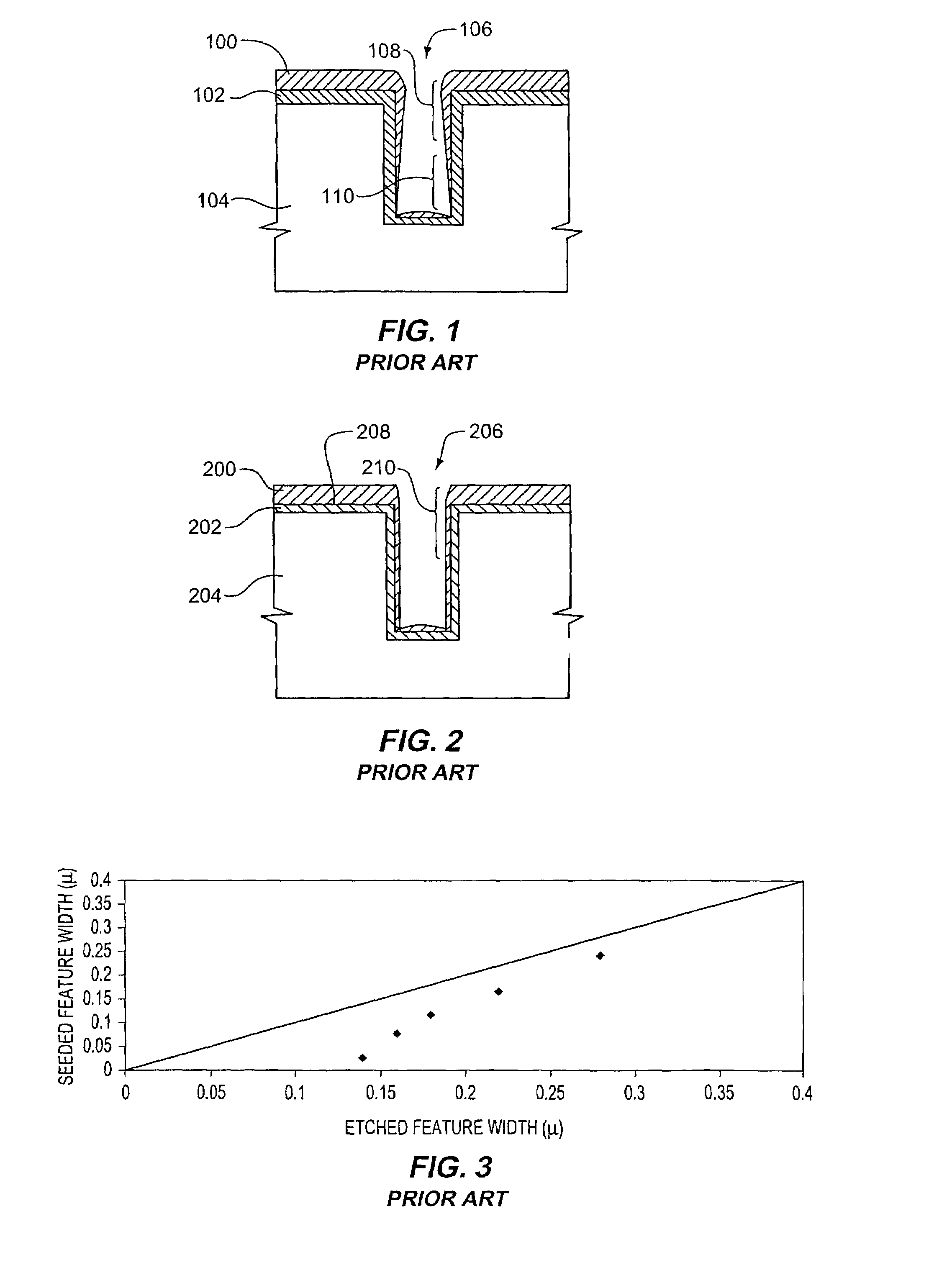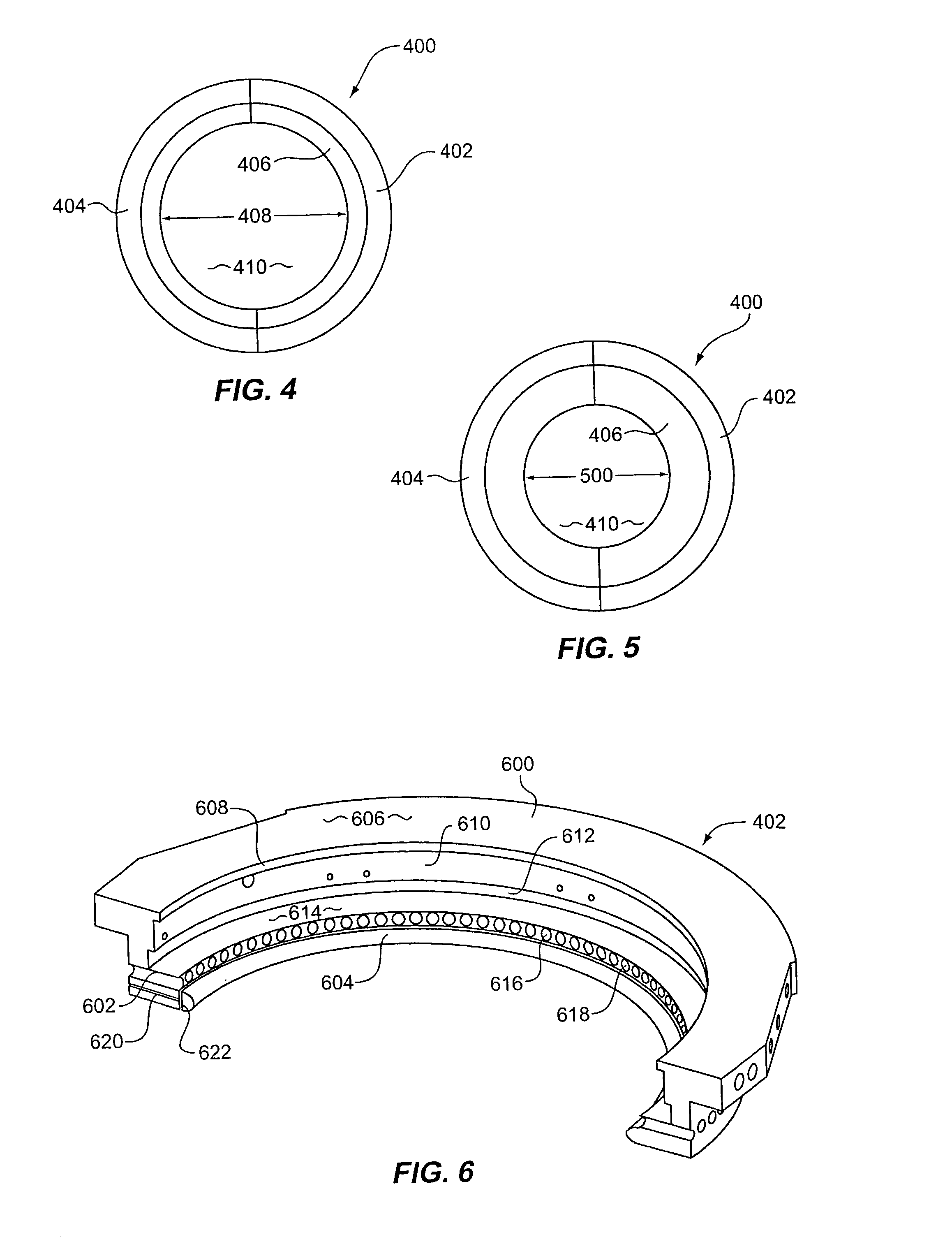Dynamically variable field shaping element
a dynamic field and shaping element technology, applied in the field of electrochemical treatment, can solve the problems of exacerbated problems, difficult or impossible to obtain these properties in seed layers, and inability to meet the thickness irregularities of prior art electroplating techniques, and achieve uniform current distribution
- Summary
- Abstract
- Description
- Claims
- Application Information
AI Technical Summary
Benefits of technology
Problems solved by technology
Method used
Image
Examples
Embodiment Construction
[0048]The invention is described herein with reference to FIGS. 1–14. It should be understood that the structures and systems depicted in schematic form in FIGS. 4–14 are used to explain the invention and are not precise depictions of actual structures and systems in accordance with the invention. Furthermore, the preferred embodiments described herein are exemplary and are not intended to limit the scope of the invention, which is defined in the claims below.
[0049]Embodiments in accordance with the invention compensate for electrical resistance and voltage drop across the wafer, particularly during phases of electrochemical treatment when the conductive metal film at the treatment surface of the substrate is especially thin; for example, at the beginning of an electroplating process when the thin seed layer dominates current flow and voltage drop, or in later stages of an electropolishing operation. Such compensation is generally conducted by shaping a potential drop in the electro...
PUM
| Property | Measurement | Unit |
|---|---|---|
| Thickness | aaaaa | aaaaa |
| Angle | aaaaa | aaaaa |
| Size | aaaaa | aaaaa |
Abstract
Description
Claims
Application Information
 Login to View More
Login to View More - R&D
- Intellectual Property
- Life Sciences
- Materials
- Tech Scout
- Unparalleled Data Quality
- Higher Quality Content
- 60% Fewer Hallucinations
Browse by: Latest US Patents, China's latest patents, Technical Efficacy Thesaurus, Application Domain, Technology Topic, Popular Technical Reports.
© 2025 PatSnap. All rights reserved.Legal|Privacy policy|Modern Slavery Act Transparency Statement|Sitemap|About US| Contact US: help@patsnap.com



